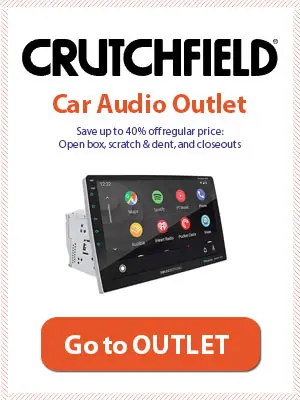What’s the difference between 2-Ohm and 4-Ohm speakers?
While the practical difference between 2 and 4-ohm is not huge, there are two major differences. 2-ohm speakers (see our picks) can play a little louder, all other things being equal, but they also need amplifiers that can handle their hunger for current.
Table of Contents
Impedance, which measures how much the speaker pushes back on the amplifier sending it a signal, is expressed in ohms and is important for two reasons. First, it can help determine how loud your speakers can play. Second, it is an important part of understanding whether or not a given speaker will work with your car’s audio system.
Can I replace 2-Ohm speakers with 4-Ohm speakers?
In short, you can replace 2-ohm speakers with 4-ohm speakers. However, exercise caution and match load impedance of the speakers and amp when you go the other way around i.e. replacing 4-ohm speakers with 2-ohm speakers.
For instance, a 4-ohm speaker that generates 100W will draw the same wattage from a 4-ohm amp. In contrast, a 2-ohm speaker will cause the same amp to produce 200W. The inevitable result of this would be that the amplifier will get overloaded and will begin to overheat the amplifier and perhaps even cause further damage to your vehicle’s audio system.
On the other hand, when you replace 2-ohm speakers with 4-ohm variants, you don’t have to worry about the amp overload.
Volts vs. Amps
Before we can understand the difference between a 2- and 4-ohm car speaker, we need to step back and understand how power gets measured.
The electrical signal that your car’s amplifier sends to the speaker has two parts. One part of it, the voltage, measures how hard the signal gets sent. The other part of it, the current, measures how much power is being sent.
If you imagine someone throwing a ball, the voltage is how hard they throw it. The current — also called amperage and measured in amps — is how big the ball is. A baseball being thrown by a professional pitcher would be like a high voltage, low current signal. A young child throwing a basketball is a low voltage, high current signal.
Either characteristic determines how loud your stereo plays. More voltage can make it louder, and more current can make it louder.
However, voltage and current are linked through a property described by Ohm’s Law. The factor that links the two is resistance — which is what impedance measures. Ohm’s Law specifically states that voltage = current times resistance.
So if you have a 12-volt system, and you have a 2-ohm speaker, it would get 6 amps of current (12=6*2). If you have a 12-volt system and you have a 4-ohm speaker, it only gets 3 amps of current (12=3*4).
What Does This All Mean
Looking back at Ohm’s Law, we see that if resistance goes down, current goes up. The 4-ohm speaker takes 3 amperes at 12 volts while the 2-ohm speaker takes 6 amperes at 12 volts. Amplifiers aren’t usually rated in volts and amps, though. They’re rated in watts.
In electricity, a watt is equal to volts times amps. So the 2-ohm speaker takes 72 watts of power and the 4-ohm speaker takes 36 watts of power.
In any speaker, the more watts of power you send to it, the louder the sound it makes (up to its limit). Doubling the power means that the sound is 3 decibels louder. This is not twice as loud, but it’s still louder!
It isn’t quite this simple, though. While a 2-ohm speaker should take twice the current of a 4-ohm speaker and play 3 dB louder, your car’s amplifier or head unit might not be able to handle that much current. This means that if you’re thinking about using 2-ohm speakers, you need audio components that are rated to drive them.
